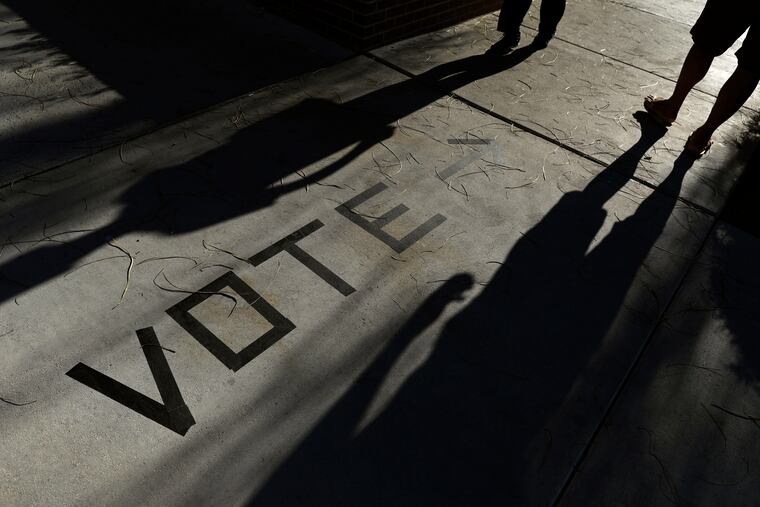Here’s who will win the presidency in 2020 and what factors could change the outcome | Opinion
The important thing isn’t whether the president is popular or not, but whether the candidate's popularity is rising or falling when people go to the polls. Pennsylvania will be the most critically important in determining our next president. And results will boil down to turnout in a few counties.

The economy may not be at the top of voters’ minds in every election, but it is rarely further than a close second. This is the premise behind Moody’s Analytics’ models predicting the outcome of the 2020 presidential election. FYI, I’m the company’s chief economist.
Let me dispense with any suspense: Our statistical models predict that President Donald Trump will cruise to victory — if the economy is performing a year from now as it is today, if Trump has roughly the same job approval rating, and if voter turnout is not much different from past elections.
Whether that makes you a happy Republican or depressed Democrat, you should read on.
We use three different models to predict whether the incumbent presidential candidate will win the popular vote in each state and the District of Columbia, and thus the necessary Electoral College votes to win the election.
To capture the political realities of each state, the models include the share of the vote that the current incumbent party received in each state in the prior presidential election. This captures well-ingrained voting patterns. For example, Texas invariably votes for Republicans and New York for Democrats.
The change in the president’s approval rating in the two years before the election also matters. This may be surprising, but the important thing isn’t whether the president is popular or not — Trump’s approval rating has consistently been lower than any other modern president’s — it is whether the president’s popularity is rising or falling when people go to the polls.
Trump supporters have been steadfast in their approval. Regardless of what the president says or does, his base hasn’t budged from him. That may change with the quickly unfolding impeachment proceedings or any of the brewing scandals in his administration. But if his base holds, the president’s reelection is more likely.
How the economy impacts voting differs in each of the models. In our pocketbook model, the change in gasoline prices, house prices, and incomes after inflation drive voting. Stock price changes and real incomes matter most in our stock market model, and the strength of the job market and real incomes are critical in our unemployment rate model.
To test the ability of these models to accurately predict future elections, we determined how well the models would have predicted elections going back to the 1980 contest between Jimmy Carter and Ronald Reagan. Each model nails all 10 elections since then.
We’ve been predicting presidential elections since 1994 and got it right every time, except in 2016. The model we were using then incorrectly predicted that Hillary Clinton would win. In the postmortem, we figured out that our mistake was not accounting for voter turnout. We had assumed that turnout would be typical. It was anything but, as Trump got out his vote, but Clinton didn’t.
For the 2020 election, our models include voter turnout for the nonincumbent party. It turns out that predicting turnout is very hard, particularly a year away from Election Day, because turnout depends on who the candidates are and how excited voters are about them. So we don’t try. But we can determine what will happen if turnout is higher or lower than is typical for the incumbent party.
Democrats, listen up. If you want a new president in 2020, you must all vote. Indeed, the election results will swing if Democratic turnout is similar to the record turnout during Obama’s first election in 2008, when the raging financial crisis pumped up the Democrats. The extraordinary turnout by the Democrats in the 2018 midterm election certainly suggests this is doable.
Turnout is critical in three key swing states: Michigan, Wisconsin, and you guessed it, Pennsylvania. In fact, Pennsylvania will be the most critically important in determining our next president, and it boils down to only a few counties in the state, including Luzerne and Schuylkill (Wilkes-Barre and environs), and Westmoreland and Washington Counties near Pittsburgh. It’s not about whether the president or the Democratic candidate wins these counties, but about Democratic turnout in those counties. If it is high enough, it will put Pennsylvania in the Democratic column and the Democratic candidate in the White House.
All of this assumes that a year from now, the economy will be performing about as well as it is today and President Trump’s approval rating is more or less the same. But if the economy and stock market are weaker, or if the president’s low popularity is slumping further, then the Democrats’ chances of retaking the presidency are even better. And vice versa.
Of course, we are about a year out from the election. A lot will happen. We will update the results of our models every month right up through Election Day based on incoming economic data and the president’s shifting popularity. Stay tuned.